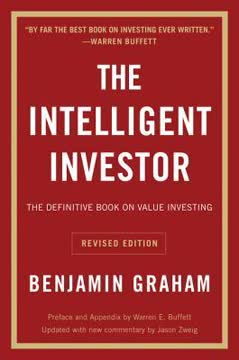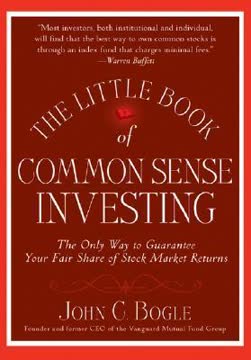Key Takeaways
1. Valuation: Bridging Theory and Practice
Every asset, financial as well as real, has a value.
Value is fundamental. Whether it's a stock, a bond, or a piece of real estate, every asset possesses an inherent value. The art and science of valuation lie in understanding not just what that value is, but also where it comes from. This understanding is the key to successful investing and managing assets effectively.
Uncertainty is inevitable. Valuation is not an exact science. There's always a degree of uncertainty involved, stemming from the asset itself and the limitations of the valuation models we use. This uncertainty necessitates a philosophical approach to valuation, acknowledging its inherent subjectivity.
Valuation's broad applications. Valuation isn't confined to a single area of finance. It plays a crucial role in portfolio management, acquisition analysis, and corporate finance, each with its own specific objectives and applications. The core principles, however, remain consistent across these domains.
2. Discounted Cash Flow (DCF) Valuation: The Cornerstone
In discounted cash flow valuation, we try to estimate the intrinsic value of an asset based upon its fundamentals.
Intrinsic value matters. DCF valuation aims to estimate the intrinsic value of an asset, the value that would be assigned by an all-knowing analyst with perfect foresight. While this is an ideal, it serves as a benchmark against which market prices can be compared.
Cash flow is king. The foundation of DCF valuation is the present value rule: the value of any asset is the present value of its expected future cash flows, discounted at a rate that reflects the riskiness of those cash flows. This principle applies across all asset classes, from risk-free bonds to volatile equities.
DCF model variations. While numerous DCF models exist, they all boil down to a few key variations:
- Equity valuation (discounting cash flows to equity at the cost of equity)
- Firm valuation (discounting cash flows to the firm at the weighted average cost of capital)
- Adjusted present value (APV) valuation (valuing the firm in pieces, beginning with its operations and adding the effects on value of debt and other non-equity claims)
3. Relative Valuation: Pricing Through Comparison
In relative valuation, the value of an asset is derived from the pricing of 'comparable' assets, standardized using a common variable such as earnings, cashflows, book value or revenues.
Market reliance. Unlike DCF valuation, which seeks intrinsic value, relative valuation relies heavily on market pricing. It assumes that the market, on average, prices assets correctly, but may make errors in pricing individual assets.
Comparable assets are key. The core of relative valuation is finding "comparable" assets and standardizing their prices using a common variable, such as earnings, cash flow, or book value. This allows for a comparison of relative value and the identification of potential mispricings.
Fundamentals vs. Comparables. Relative valuation can be approached in two ways:
- Using fundamentals: Deriving multiples from DCF models, linking them to growth, risk, and cash flow measures.
- Using comparables: Comparing a firm's multiple to those of similar firms, controlling for differences in fundamentals.
4. Asset-Based Valuation Models: Assessing Intrinsic Worth
Ultimately, all valuation models attempt to value assets – the differences arise in how we identify the assets and how we attach value to each asset.
Asset-based valuation models. These models estimate value by aggregating the value of a firm's individual assets. Two common variants are:
- Liquidation value: The estimated sale proceeds of a firm's assets if sold off individually.
- Replacement cost: The cost to replace all of a firm's assets at current market prices.
Not an alternative approach. While analysts may use asset-based valuation approaches to estimate value, they are not considered to be alternatives to discounted cash flow, relative or option pricing models since both replacement and liquidation values have to be obtained using one or more of these approaches.
Asset identification is key. The differences between valuation models arise in how we identify the assets and how we attach value to each asset. In liquidation valuation, we look only at assets in place and estimate their value based upon what similar assets are priced at in the market. In traditional discounted cash flow valuation, we consider all assets including expected growth potential to arrive at value.
5. Contingent Claim Valuation: Recognizing Option Value
The fundamental premise behind the use of option pricing models is that discounted cash flow models tend to understate the value of assets that provide payoffs that are contingent on the occurrence of an event.
Beyond traditional DCF. Contingent claim valuation, or option pricing, acknowledges that the value of an asset may not be fully captured by the present value of expected cash flows, especially when those cash flows are contingent on specific events.
Option-like features. Many assets possess option-like characteristics, such as:
- Patents: The right, but not the obligation, to develop a product.
- Undeveloped natural resource reserves: The right, but not the obligation, to extract resources.
- Equity in distressed firms: A call option on the firm's assets, with the debt as the strike price.
Option pricing models. These models, like the Black-Scholes model, can be used to value assets with option-like features, considering factors like the current value of the underlying asset, its volatility, the strike price, time to expiration, and the risk-free interest rate.
6. Understanding Financial Statements: Unveiling the Numbers
Financial statements provide the fundamental information that we use to analyze and answer valuation questions.
Financial statements are key. Financial statements are the primary source of information for most investors and analysts, providing insights into a firm's assets, liabilities, equity, earnings, and cash flows.
Accounting vs. Financial Analysis. While accounting aims to measure past performance, financial analysis is forward-looking, using financial statements to estimate future cash flows and value. This difference in objectives leads to variations in how information is interpreted and used.
Key questions answered by financial statements:
- How valuable are the assets of a firm?
- How did the firm raise the funds to finance these assets?
- How profitable are these assets?
- How much uncertainty (or risk) is embedded in these assets?
7. Risk Assessment: Quantifying Uncertainty
Risk, as we see it, refers to the likelihood that we will receive a return on an investment that is different from the return we expected to make.
Risk is deviation from expectation. In finance, risk is not just about negative outcomes. It encompasses the possibility of both lower-than-expected (downside risk) and higher-than-expected (upside risk) returns.
Equity risk vs. default risk. Equity risk relates to the uncertainty of cash flows on investments without promised cash flows, while default risk concerns the possibility of not receiving promised cash flows, such as interest or principal payments on debt.
Accounting measures of risk. Accounting statements provide limited insight into risk, primarily focusing on default risk through disclosures and financial ratios like the current ratio and interest coverage ratio. These measures offer a static view of a firm's ability to meet its obligations.
8. Earnings Analysis: From Accounting to Economic Reality
Generally accepted accounting principles require the recognition of revenues when the service for which the firm is getting paid has been performed in full or substantially and for which it has received in return either cash or a receivable that is both observable and measurable.
Accrual accounting. Accrual accounting recognizes revenue when earned and matches expenses to revenues, providing a more accurate picture of a firm's performance than cash accounting.
Categorization of expenses. Expenses are classified into operating, financing, and capital expenses, each treated differently in the income statement. Operating expenses are deducted from revenues, financing expenses are subtracted from operating income, and capital expenses are written off over their useful life as depreciation or amortization.
Non-recurring items. Nonrecurring items, such as unusual gains or losses, extraordinary items, and losses from discontinued operations, should be carefully analyzed to determine their impact on future earnings.
9. Growth Estimation: Projecting the Future
The value of a firm is the present value of expected future cash flows generated by the firm.
Growth is key. Growth is a critical input in valuation, especially for high-growth firms, as it significantly impacts future cash flows and terminal value.
Historical growth. While past growth can provide insights, it's not always a reliable indicator of future growth, especially for young or volatile firms. Revenue growth tends to be more persistent than earnings growth.
Analyst estimates. Analyst estimates can be useful, but they may be biased or reflect short-term expectations. It's important to consider the number and quality of analysts following a stock.
10. Terminal Value: Capturing Long-Term Worth
Even at the end of the most careful and detailed valuation, there will be uncertainty about the final numbers, colored as they are by the assumptions that we make about the future of the company and the economy.
Terminal value is significant. The terminal value, representing the value of a firm beyond the explicit forecast period, often constitutes a large portion of the total value, making its estimation crucial.
Approaches to estimating terminal value:
- Liquidation value: Estimating the proceeds from selling off a firm's assets.
- Multiple approach: Applying a multiple to earnings, revenues, or book value in the terminal year.
- Stable growth model: Assuming cash flows grow at a constant rate forever.
Stable growth assumptions. When using the stable growth model, the growth rate must be sustainable and less than or equal to the economy's growth rate. The reinvestment rate and other financial characteristics should also be consistent with a stable growth firm.
11. Valuing Financial Service Firms: A Sector-Specific Approach
If the objective in corporate finance is the maximization of firm value, the relationship among financial decisions, corporate strategy and firm value has to be delineated.
Financial service firms are unique. Financial service firms, such as banks and insurance companies, differ from other firms in terms of their business models, regulatory environments, and the nature of their assets and liabilities.
Key considerations for valuing financial service firms:
- Debt: Often viewed as a raw material rather than a source of capital.
- Regulation: Heavily regulated, impacting growth and risk.
- Reinvestment: Difficult to measure due to intangible assets.
Valuation approaches. Equity valuation models, such as dividend discount models and free cash flow to equity models, are generally more appropriate for financial service firms than firm valuation models.
12. Valuing Distressed Firms: Navigating Financial Trouble
For these firms, estimating future cashflows is difficult to do, since there is a strong probability of bankruptcy.
Distressed firms pose unique challenges. Distressed firms, with negative earnings and high debt, require special valuation techniques to account for the risk of bankruptcy.
Equity as a call option. In distressed firms, equity can be viewed as a call option on the firm's assets, with the debt as the strike price. Option pricing models can be used to value this equity, considering factors like the value of the underlying assets, the face value of debt, and the time to maturity.
Accounting measures of risk. Accounting risk measures generally take a static view of risk, by looking at the capacity of a firm at a point in time to meet its obligations.
Last updated:
Review Summary
Investment Valuation is highly regarded by readers for its comprehensive coverage of valuation methods. Many praise Damodaran's clear writing style and step-by-step approach. The book is considered essential for finance professionals and students. Some readers find it challenging without prior finance knowledge. A few criticize the writing as confusing or outdated. Overall, reviewers appreciate the book's depth and practical examples, recommending it as a valuable resource for understanding asset valuation. Many readers also suggest complementing the book with Damodaran's online lectures and materials.
Similar Books










Download PDF
Download EPUB
.epub digital book format is ideal for reading ebooks on phones, tablets, and e-readers.








